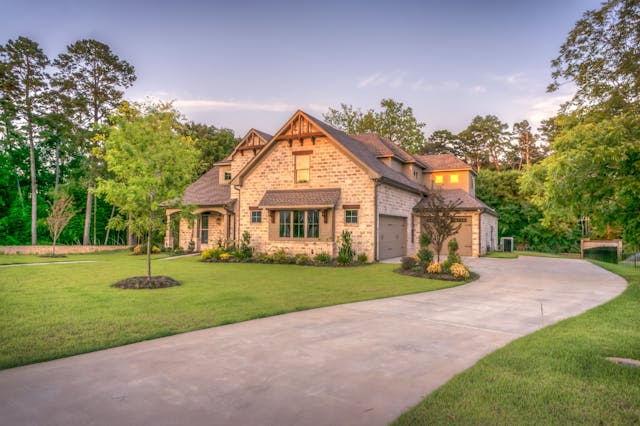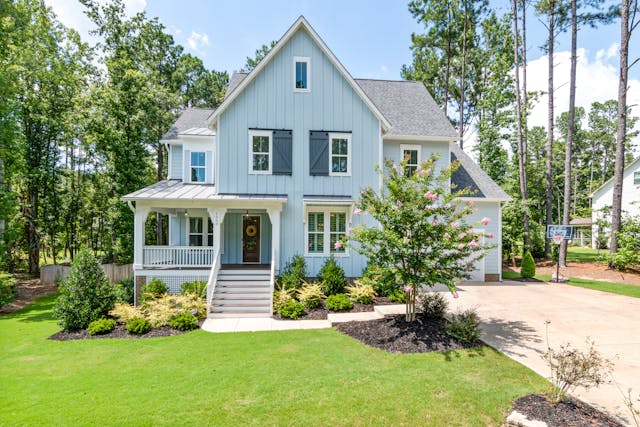A well-maintained exterior plays a major role in preserving a home’s structure, appearance, and long-term resilience. Every season presents new challenges that put stress on surfaces, protective layers, and outdoor components. Homeowners who stay attentive to ongoing upkeep create fewer repair surprises and a safer living environment. Routine care supports curb appeal, which becomes valuable when a home goes on the market. Small tasks often prevent larger issues, making a proactive approach one of the most effective strategies for long-lasting exterior protection.

Maintaining Siding for Lasting Protection
Siding stands as one of the first elements exposed to harsh sunlight, wind, moisture, and temperature swings. Materials such as vinyl, fiber cement, and wood require different methods of cleaning. Regular washing helps prevent buildup that can weaken finishes or hide damage.
Cracks, loose panels, and warping should be addressed quickly to stop moisture from reaching sheathing or insulation. Paint layers on wood siding need touch-ups to preserve their protective qualities. Mold growth often indicates improper drainage or ventilation, which should be corrected before the issue spreads.
Impact damage from branches or outdoor equipment can create openings for pests. Many homeowners choose to review trusted service providers, such as those found at kvconstruction.net, when seeking guidance on repairs or replacements. Routine review of siding conditions supports the home’s defense system and reinforces long-term reliability.
Keeping Roofing Systems in Strong Condition
Roofing health affects everything beneath it, making steady care a priority. Shingles should be checked for curling, missing sections, or granular loss. Flashing around vents, chimneys, and skylights can loosen with seasonal expansion and contraction.
Gutters and downspouts help reduce roof strain by directing water away, and clogs can lead to pooling that shortens the lifespan of roofing materials. Algae streaks may signal moisture retention or shade-related concerns that need correction. After strong storms, debris should be cleared promptly to prevent damage.
Professional inspections, once or twice a year, catch structural concerns that homeowners may miss. When roofing layers remain sound, attic conditions improve, temperature regulation becomes easier, and moisture is less likely to infiltrate interior spaces.
Safeguarding Windows and Exterior Doors
Windows and doors contribute both function and comfort, so maintaining their condition supports energy efficiency and security. Weatherstripping can compress through frequent use, allowing drafts that strain heating and cooling systems.
Sealants surrounding frames should stay intact to prevent moisture from escaping into wall cavities. Glass panes benefit from regular cleaning to maintain visibility and detect any chips or cracks. Hinges and locks can loosen, leading to alignment issues or difficulty closing. Older frames may warp under intense sun exposure, reducing their ability to insulate.
Screens should be repaired when torn so insects remain outside. Homeowners who keep up with these steps preserve indoor comfort and protect the structural materials surrounding each opening.
Protecting Decks, Patios, and Outdoor Structures
Outdoor living areas encounter the same environmental pressure as the home’s main structure. Wood decks require sealing or staining to preserve strength and color. Composite materials still need cleaning to prevent mildew and slippery surfaces.
Concrete patios may crack due to soil movement, and filling small gaps early avoids larger problems. Railings should remain stable to support safe use. Fences benefit from periodic tightening or paint touch-ups to prevent weather-related fading.
Sheds and pergolas need inspection for loose hardware or shifting posts. These surfaces benefit from simple care that supports durability and appearance, such as:
• Regular sweeping keeps dirt and organic material from holding moisture
• Power washing removes grime without damaging surfaces
• Seasonal sealing helps repel water and maintain structural integrity
Outdoor structures last far longer when regularly monitored for small issues that could expand into safety concerns.
Managing Drainage and Groundwater Movement
Poor drainage creates one of the most common threats to home exteriors. Water pooling around foundations can lead to cracks, soil erosion, and pressure on structural walls. Downspouts should extend far enough to move water safely away.
French drains or gravel paths may be needed when slopes direct water toward the home. Soil touching siding raises the risk of moisture absorption or insect activity, so proper clearance is useful. Window wells should stay free of debris to prevent water buildup.
Mulch should be kept at a reasonable depth so it does not trap moisture against exterior materials. When water moves correctly through a yard, foundations, siding, and outdoor structures remain stronger and last longer.
Caring for Landscaping Near the Home
Landscaping can enhance the property while still requiring careful placement and maintenance. Large shrubs and trees planted too close to the house can cause root interference or damage exterior finishes.
Leaves and branches collecting around the structure hold moisture and invite rot. Branches hanging over the roof risk puncturing during storms. Irrigation systems should be aimed away from walls to protect against unnecessary moisture exposure. Trimming plants routinely helps maintain airflow and sunlight access, reducing moss buildup.
Gravel or stone borders can create attractive separation zones that keep soil from contacting siding. When landscaping complements exterior needs, the home remains safer and easier to sustain.

Staying attentive to home exterior maintenance protects structural integrity, prevents avoidable repair costs, and extends the life of outdoor features. A consistent routine helps preserve both appearance and function, giving the home a stronger foundation for the future.


